Every week I sit down to pull this newsletter together, almost overwhelmed by the escalating assaults on democracy, and every week I ask myself, What’s the point of art when the world is falling apart? Is art nothing more than an escape and a balm for the soul? And I answer, So what? Isn’t it in times like these that we need reminders of what a great civilization is all about?
So I have been eagerly following the re-opening of the Frick Collection in New York, after five years of its being off-limits for $220 million worth of renovations, and with the knowledge that I may never see this beloved gem of a museum again. I have to teleport my eyes through pictures and memories, and I’ve been reading everything I can about the facelift given this venerable landmark (all the time aware that Henry Clay Frick was as ruthless in his day as Trump is in ours—but at least he bequeathed a trove of masterpieces. All Trump threatens to leave us is a wrecked economy and a possibly nauseating “garden of heroes”)
Besides following the Frick, I’ve been writing reviews, and one I penned (can we still use that verb?) about two weeks ago takes aim at the Harwood Museum’s show of works by veteran Land Artist Charles Ross (scroll all the way down the Visual Art Source link). I’ve been watching this institution closely since I moved to Taos fourteen years ago, and it has seldom risen above sluggish in its programming and curation. I don’t quite get it. Other small museums across the country, in particular the Aldrich in Ridgefield, CT, offer smashing shows with first-rate art. This place seems severely crippled by a lack of taste and vision.
There were glimmers of real intelligence when Jina Brenneman was in charge of curating at the Harwood from 2008 till about 2018. She produced, for instance, a dynamite show of Agnes Martin’s works before the artist chanced on the grid as her fundamental organizing principle (and after she left the museum, she went on to produce a revelatory documentary called “Agnes Martin: Before the Grid”). So when I was in the high-gear editing phase of Vasari21, I was delighted to ask her to be part of an occasional feature known as “Fantasy Curating,” inviting artists and others to pull together exhibitions they would like to see in the real world. Jina, herself a ceramist, noted a trend in clay sculpture toward the awkward, the unloved, and the downright creepy. Not the sort of work collectors and museums have traditionally favored, but for sure an irresistible lodestone for certain intrepid sculptors. So here’s Jina’s original fantasy curation, “Perfectly Imperfect.”
Post-disciplinary, Neo Craft, Sloppy Craft, and the Hyper Pot are all descriptors that attempt to classify the seismic shift in contemporary ceramics. Artificial in nature, these technicolor works drip with irregularities, gloppy blobs, and bulges that weirdly melt over crackled chips of clay. This particular group of artists—although they pay homage to the likes of John Mason, Peter Voulkos, Betty Woodman, Ron Nagle, and Ken Price—have more in common with George Ohr. Ohr (1857 – 1918), the self-proclaimed “Mad Potter of Biloxi,” was relatively unknown in his day. His twisted, misshapen pots are now prized collectors’ items and are considered a harbinger of the abstract ceramic work that would evolve decades after his death. Ohr billed himself “the greatest potter on earth,” but few in his lifetime would have agreed with that assessment.
Imperfection has historically been an important quality of many ceramic artists. The practice of the Japanese-influenced approach of Wabi Sabi has long preached the perfection of imperfection, but this new generation of artists is something entirely different. In the practice of Wabi Sabi, a perfectly built piece is marked with a small imperfection. The “Neo Craft” bunch relies exclusively on the imperfect. Although there are affinities with the painterly excesses of Abstract Expressionism, the work defies categorization and often comes off as in-your-face goofy. Traditional potters are typically not keen on this direction. Like the rock-and-rollers who felt the incorrigible punks were killing their craft, many professional potters feel the same about the mysterious shapes being created in studios around the world.
Its popularity is on the rise, however, and New York Times art critic Roberta Smith calls ceramics the “new video.” Says Garth Clark, the dealer who put ceramics on the map as fine art: “It’s difficult to actually pinpoint the transition. It started to take place about five years ago [when] a number of major ceramic artists began to produce exceedingly mature work. Some very bright, young-minded collectors started to collect it. And it became apparent that there wasn’t that much around. Competition developed for the work and the marketplace began to suddenly take hold.” Pieces by Rudy Autio were suddenly selling for $10,000, and Peter Voulkos’ works could command $35,000.
Geographically, this trend began as a West Coast phenomenon, but it has spread throughout the U.S. and around the globe. It has a strong presence in the Lowlands and Denmark. Inclusivity also marks this new breed of sculptors. Throughout art history, there has been a cataclysmic gender divide. The artists working today, in the nontraditional fashion, don’t seem to give a hoot about sexual orientation. And the current high mark for a piece of contemporary ceramics reached $268,000 for a piece by a Kenyan-born British studio potter Dame Magdalene Odundo.
Three collectors who have greatly abetted this surge in popularity are Robert A. Ellison Jr. who, in 2009 gifted 125 modern and contemporary ceramics to the Metropolitan Museum of Art in honor of its 150th anniversary; Garth Clark, who has written extensively on ceramics, and Mark Del Vecchio, Clark’s partner and the former director of Gerald Peters Gallery in Santa Fe, NM. In 2007, the Museum of Fine Arts Houston acquired the Garth Clark and Mark Del Vecchio collection of some 475 artworks, as well as the accompanying library and artist archive. The ceramics medium is everywhere, including most of the top art galleries in London, New York, Paris, Los Angeles, Hong Kong, and elsewhere.
Until recently, only a handful of modern masters, like Picasso and Ohr, were considered worthy of serious study and exhibitions at venerable museums. But this new breed of ceramists is challenging the old norms and inspiring new ways of looking at clay.
End Notes:
Special congratulations to a very different type of artist: long-time member Francine Tint, who was recently featured in a profile in The New York Times. Below is Come Away with Me, 55 by 65 inches, oil on canvas
And if you’re looking for a fun way to spend a Sunday that does not involve picketing Tesla showrooms, consider joining performance artist Ms. Muscle (aka Barbara Lubliner) for her Monuments Tour on May 10 (rain date May 18). As she describes the excursion, “Ms. Muscle will walk to six monuments in Manhattan that depict historical women….The public is invited to join Ms. Muscle, IRL or in spirit, on the pilgrimage. At each monument, there will be a ceremonial offering of flowers. Through call and response, participants will invoke the voices and values of the historic women, weaving their legacies into our present moment.” First stop is the Harriet Tubman memorial in Harlem at St. Nicholas Avenue and Frederick Douglass Boulevard. Others include monuments to Joan of Arc, Golda Meir, and Gertrude Stein. More information can be found here.







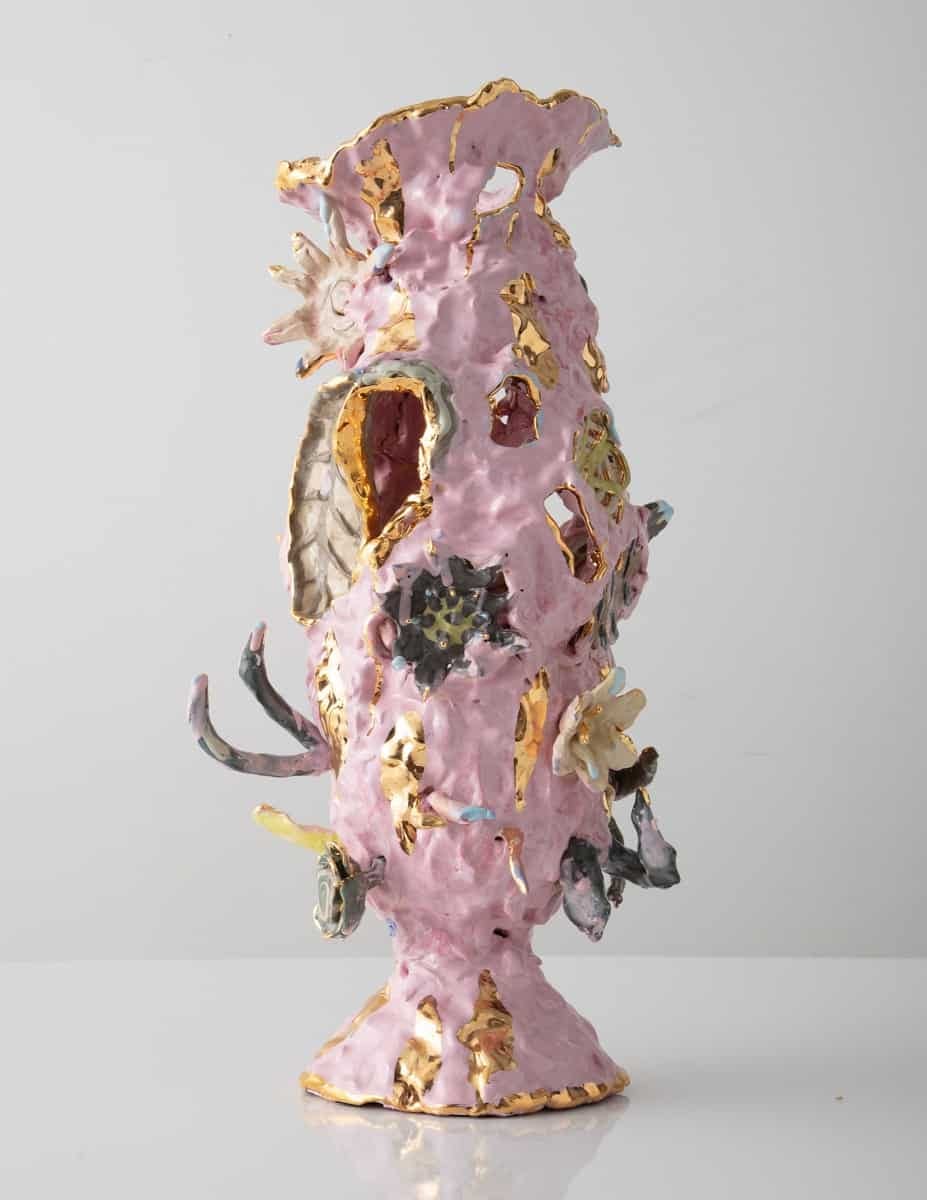

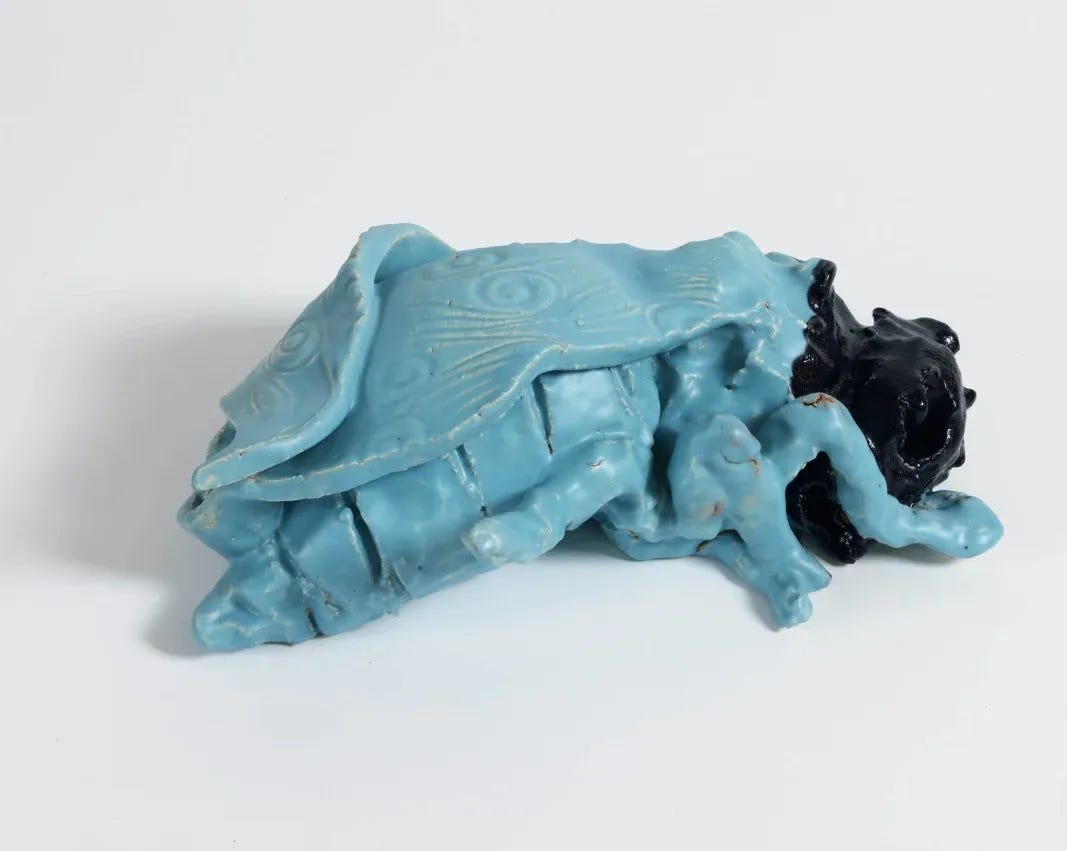
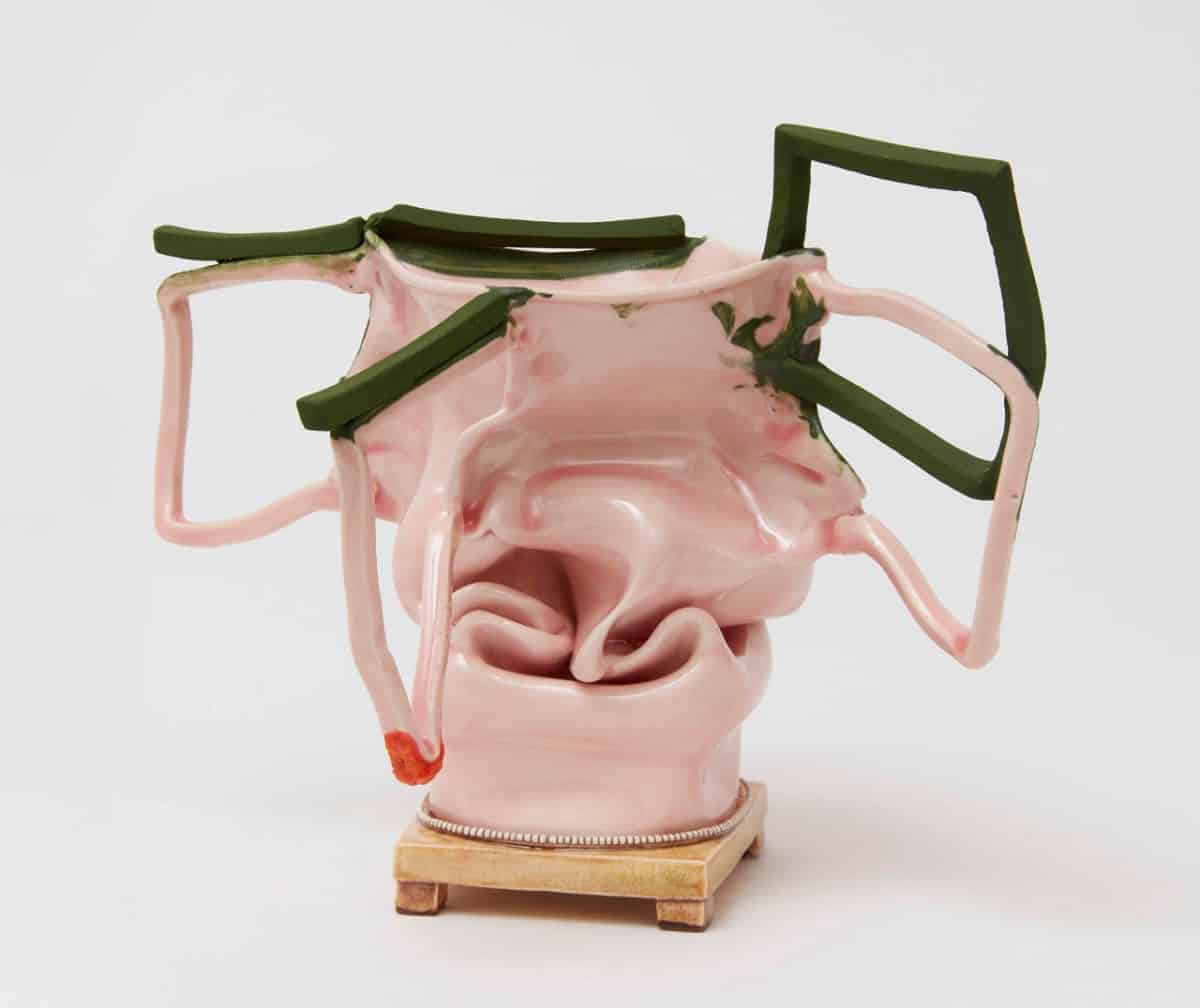

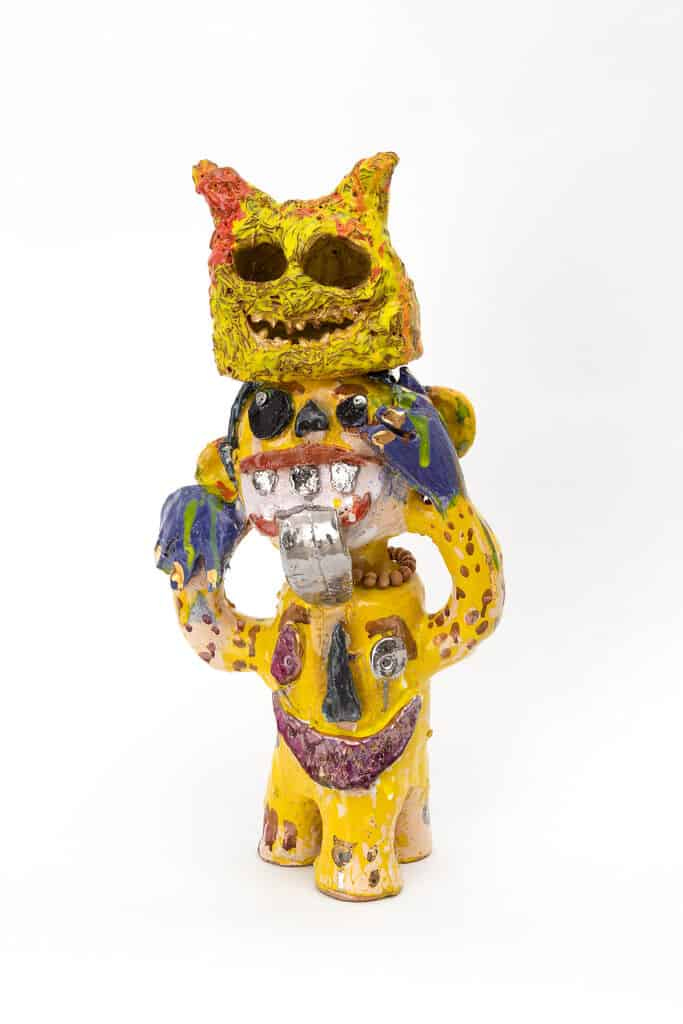


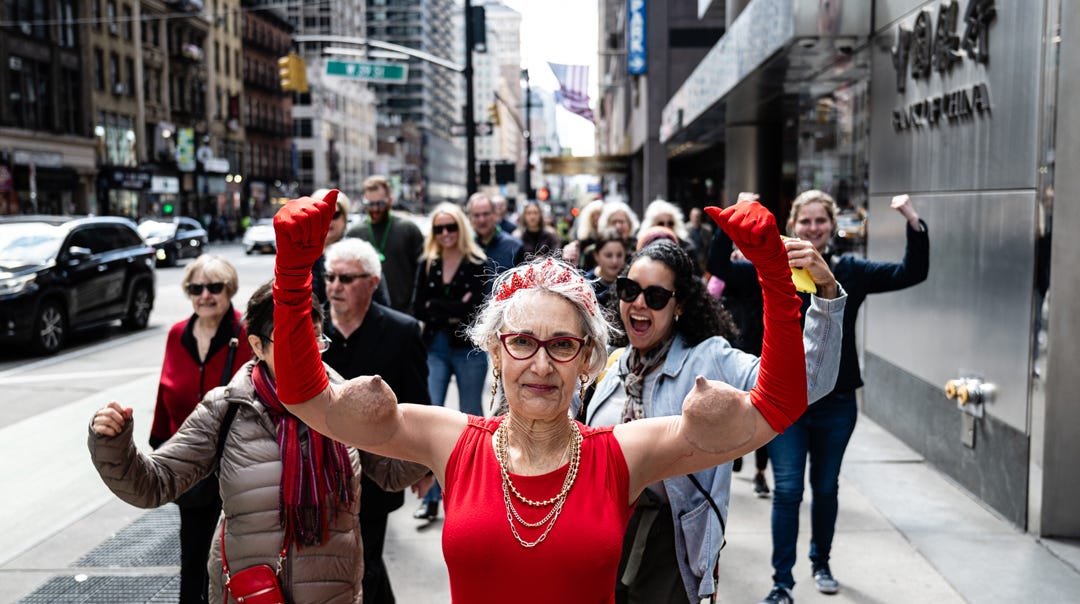
Thank you, Ann. This is a fine diversion from the tragic reality caused by Trump and his thugs. We need diversions.
But none of this can be instead of protesting. We have to have both--diversion and protest.
May 1st is a big protest day. Go somewhere, stand somewhere, hold up a sign, send letters and emails. We might as well be dead if we become inured to all of this, which is what Fascists always try to do. Turn people into docile sheep.
Ann, Thank you so much for sharing about Ms. Muscle's Monument Tour. Yes, exactly, instead of protesting we can celebrate.
You are the "Breast"!